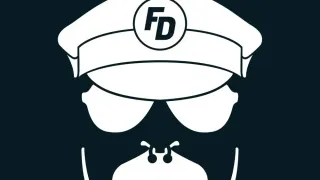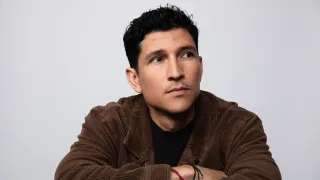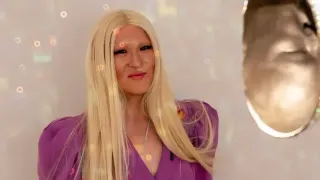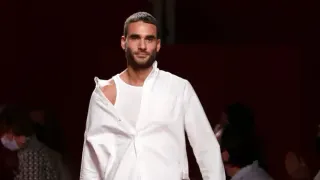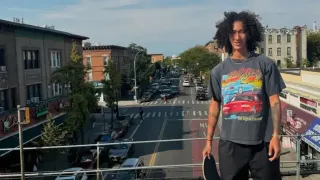July 10, 2019
Trump Defends Acosta but will Look 'Closely' at Epstein Deal
Jill Colvin and Alan Fram READ TIME: 5 MIN.
President Donald Trump says he'll be looking "very closely" at Labor Secretary Alex Acosta's handling of a sex trafficking case involving now-jailed billionaire financier Jeffrey Epstein. But he also seemed to stand by his Cabinet official, praising Acosta's performance on the job and saying he felt "very badly" for him.
As for Epstein, Trump – who had once praised the financier as "a terrific guy" – distanced himself from the hedge fund manager now charged with abusing minors, saying the two had had a falling-out 15 or so years ago.
"I was not a fan of his, that I can tell you," Trump said.
His comments on Tuesday came as a parade of Democratic presidential contenders and party leaders demanded that Acosta, a former federal prosecutor in south Florida, resign or be fired over his role in a secret 2008 plea deal that let Epstein avoid federal prosecution after allegations he molested teenage girls.
Epstein pleaded not guilty on Monday to new child sex-trafficking charges . Federal prosecutors in New York accuse him of abusing dozens of underage girls in the early 2000s, paying them hundreds of dollars in cash for massages and then molesting them at his homes in Florida and New York. He could face up to 45 years in prison if convicted.
Speaking to reporters Tuesday, Trump repeatedly praised Acosta, calling him a "really great secretary of labor" and "very good" at his job. He suggested it's not unusual to find past mistakes if you look hard enough.
"You know, if you go back and look at everybody else's decisions, whether it's a U.S. attorney, or an assistant U.S. attorney or a judge, if you go back 12 or 15 years ago or 20 years ago and look at their past decisions, I would think you would probably find that they would wish they'd maybe did it a different way," said Trump.
In sympathetic words that seemed to echo his statements of support for then-Supreme Court nominee Brett Kavanaugh, who had been accused of sexual misconduct as a young man, Trump also said he felt "very badly" for Acosta "because I've known him as being somebody that works so hard and has done such a good job."
Still, he said his administration would be going back to look "very closely" at the circumstances of the deal that allowed Epstein to avoid prosecution on federal charges, plead guilty to lesser state charges and serve 13 months in jail, during which he was allowed to leave to go to his office during the day.
Former Trump Press Secretary Sarah Sanders had said in February that the White House was looking into Acosta's role in the settlement. The White House has not responded to repeated questions about whether there ever was such an investigation, and, if there was, what it found.
Acosta himself weighed in Tuesday on Twitter, ignoring the calls for his resignation and crediting the charges brought against Epstein in New York to new evidence that "offers an important opportunity to more fully bring him to justice."
"The crimes committed by Epstein are horrific, and I am pleased that NY prosecutors are moving forward with a case based on new evidence," he tweeted.
On Capitol Hill, a slew of Democrats called for Acosta's resignation, including House Speaker Nancy Pelosi, who accused him on Twitter of having "engaged in an unconscionable agreement w/ Jeffrey Epstein kept secret from courageous, young victims preventing them from seeking justice."
She told reporters Tuesday that it was "no surprise" Trump was standing by Acosta. "He knew about this when he nominated him for the Cabinet," she said. "It just goes to show."
Senate Minority Leader Chuck Schumer said Trump should explain his previous comments praising Epstein.
"The president needs to answer for this, and 'I don't recall' is not an acceptable answer in this case," the New York Democrat said on the Senate floor.
Trump in 2002 told New York Magazine he'd known Epstein for 15 years, describing him as "a lot of fun to be with."
"It is even said that he likes beautiful women as much as I do, and many of them are on the younger side. No doubt about it - Jeffrey enjoys his social life," Trump was quoted saying. The two were also photographed together at parties in the 1990s and early 2000s.
Senate Republicans were critical of Epstein's alleged offenses, yet many were noncommittal about whether Acosta should retain his job.
Senate Majority Leader Mitch McConnell, R-Ky., said he was "inclined to defer to the president to make that decision." Senate Judiciary Committee Chairman Lindsey Graham, R-S.C., suggested his panel might examine Acosta's plea deal "to find out how it got off the rails."
Trump Organization attorney Alan Garten has since distanced Trump from Epstein, telling Politico in 2017 that Trump "had no relationship with Mr. Epstein and had no knowledge whatsoever of his conduct."
Epstein's personal address book, copies of which have been included in legal filings, lists multiple private numbers for contacting Trump, his wife Melania and daughter Ivanka, as well as Trump's butler, executive assistant and security staff.
Pressed on the nature of their relationship Tuesday, Trump said he'd known Epstein "like everybody in Palm Beach knew him," describing him as "a fixture" of the beachfront town where Trump spends many of his winter weekends at his private Mar-a-Lago club.
Trump went on to say that he'd had a falling-out with Epstein "a long time ago."
"I don't think I've spoken to him for 15 years. I wasn't a fan," Trump said.
The White House and Trump Organization did not immediately respond to questions about the nature of that conflict. But in court documents, a Florida lawyer representing several of Epstein's alleged victims contended the Wall Street financier was barred from Mar-a-Lago after an unspecified incident involving a teenage girl.
In a 2009 lawsuit filed by a different lawyer, a woman identified in legal filings as Jane Doe No. 102 claimed she was 15 and working a part-time job at Mar-a-Lago when she was recruited in 1998 to go to Epstein's Palm Beach mansion to provide him a massage. The woman, whose father was a maintenance manager at Trump's club, said she was then kept by Epstein as a sex slave for the next four years. The woman's case against Epstein was later settled for undisclosed terms.
As Trump campaigned for president in June 2016, a California woman filed suit against both Trump and Epstein, claiming she had sexual encounters with Trump at Epstein's sprawling New York mansion on at least four occasions in the summer of 1994, when she was 13 years old. Trump denied the allegations, and the woman's lawyer filed paperwork to voluntarily withdraw the lawsuit shortly before the November election.
That lawyer, Thomas Meagher of Princeton, New Jersey, declined Monday to comment about the case or say why it was withdrawn.
___
Associated Press writers Michael Biesecker, Darlene Superville and Kevin Freking contributed to this report.

